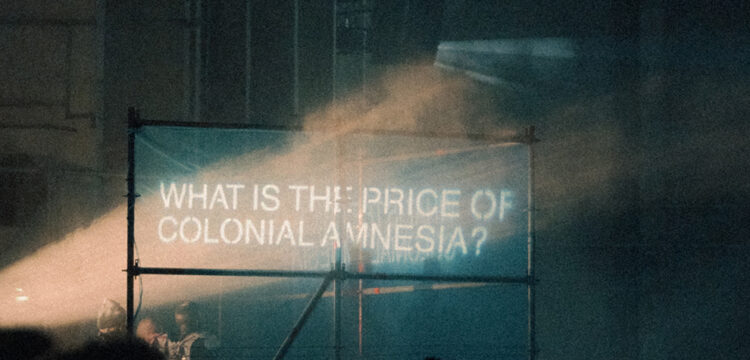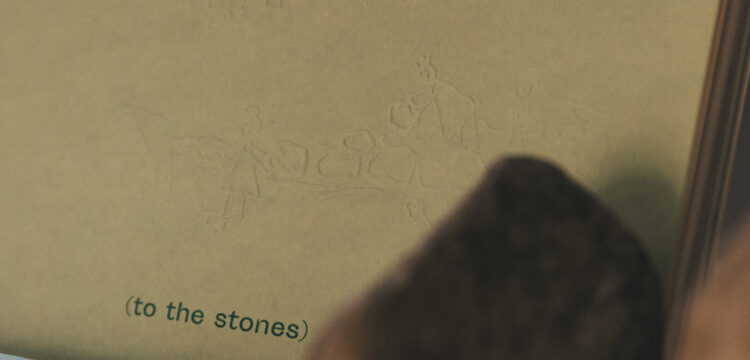A Reflective Retrospective
Cesare Pietroiusti’s self-narration through artworks, objects, suggestions, episodes, gestures, actions, behaviours, and memories
The idea for the exhibition Un certo numero di cose / A Certain Number of Things (a project by Cesare Pietroiusti curated by Lorenzo Balbi with the curatorial assistance of Sabrina Samorì, and promoted by MAMbo the first survey on the Italian artist in a museum institution) originated in a reflection on the very notion of the retrospective—whether it is possible to represent the evolution of an artist’s research in such a format. This examination led to the provocative idea of Cesare Pietroiusti: a self-narration, not just through the artworks he created, but also including objects, suggestions, episodes, gestures, actions, behaviours, and memories related to his own life, starting from the year of his birth, 1955. The following is a selection of entries from the book published by NERO (in Italian with English annex), with texts written by Cesare Pietroiusti that go over, and expand, the complex contents of the year-objects exhibited at MAMbo, complete with images and an afterword by Lorenzo Balbi.
By deliberate intention of the artist, in all texts related to the A Certain Number of Things project, the personal pronoun “I” is written in lowercase.
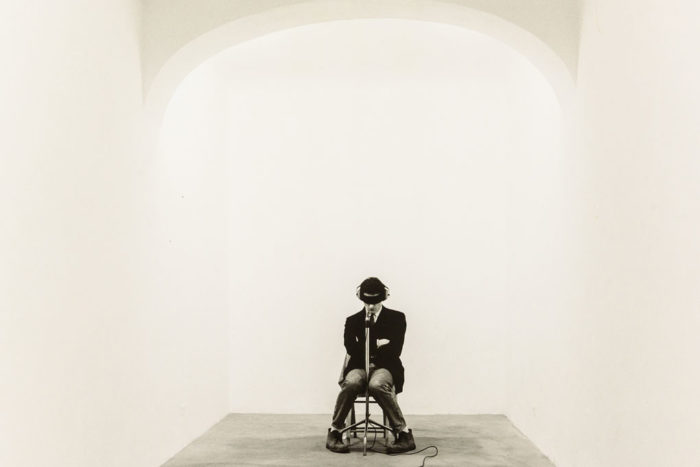
Cesare Pietroiusti, A Certain Number of Things. Installation view at MAMbo – Museo d’Arte Moderna di Bologna. Photo: Giorgio Bianchi, Comune di Bologna
2019 – INTRODUCTION
What strikes me is the fact that, in our society, art has become something that is related only to objects, and not to individuals or to life, and that it is a specialized domain, pertaining to experts who are artists. Yet, couldn’t the life of each individual become a work of art?
Why should the lamp or the house be an art object, but not our life?—Michel Foucault
A story is an account of connected events told by an author, who develops it starting from a narrative intention. It has an autonomy and formal organisation of its own, and it is not possible to change its form once a text has been «licensed» and printed. I like to think that, if is an artist who is writing the story, then it will always be, at least in part, a tool that can be used for unexpected purposes, or a diversion. Always somehow incomplete, and never entirely separable from the destiny of both the writer and the readers.
The text-story of an artist does not have to be respected as prescribed by its traditional definition. It begs to be reused, transformed, betrayed; it expects, and hopes, to become something else, thanks to the other. To lose the fixedness and status of a finished object, to de-text itself. This can lead the story to intersect with potentially endless encounters and relationships.
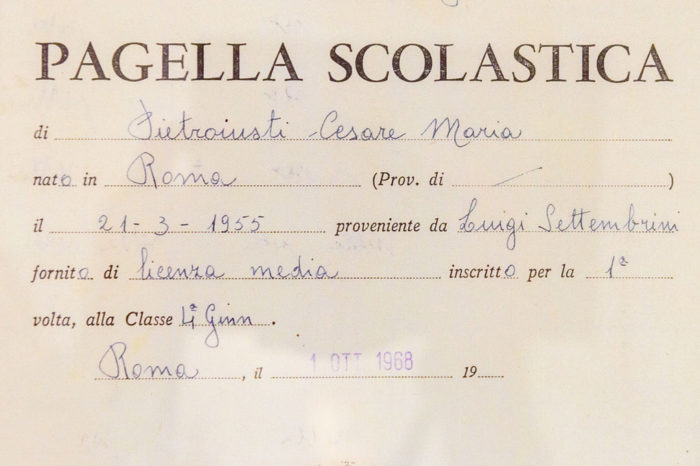
Cesare Pietroiusti, Un certo numero di cose / A Certain Number of Things. Installation view at MAMbo – Museo d’Arte Moderna di Bologna. Photo: Giorgio Bianchi, Comune di Bologna
The small stories that fill this book are organised chronologically and, like long and sometimes pedantic captions, they complement a certain number of things. 64, to be exact, which is the number of years i have lived at the moment when i set out to write about them. These 64 things (material objects and memories, documents and artworks), taken together, build a retrospective exhibition—of which this story, and the book that contains it, is the “catalogue”—and also a kind of autobiography in objects, one for each year, from 1955 to 2018. I would like these things, in their uncertain status between art and non-art, between singular and plural, between true and false, to become agents of a process of reversibility: between story and material object, between author and work, between writing and image. A reversibility that is always possible, and exposes the incompleteness i mentioned above.
In short, this book is an inextricable combination of narrative text and visual documents, and encourages forms of reading based on the mutual relationship between one and the other. A form of reading that can become a mode of interpretation, a reading key for the work of an artist. The 64 things described here can be taken as material proof, or evidence, of as many stories; as works which can be historically linked to the moment when they were first presented in a specific exhibition, or which acquire value and meaning only in retrospect, today, by being included in a survey exhibition, or in one of the stories that follow. It is not over.
2019, The 64th year, will be represented by a super-thing: it will be the sum of the remakes of the previous 63 things. How these remakes are to be executed will be decided collectively—in a workshop that will take place during, and literally inside, the exhibition—by a group of young artists and students, along with myself. This convoluted game of references between text and objects, material and immaterial, singularity of the artwork and exhibition-as-artwork and, finally, between different times, will not only play up to the narcissism of the artist, who will see the value of what he said and did recognized by a retrospective show, but will also validate the assumption that much is still to be done and said; that the artwork, even at the risk of losing its very distinctiveness, does not remain confined within the past. It is not finished. Perhaps, it is not done. Not even after it has been catalogued.
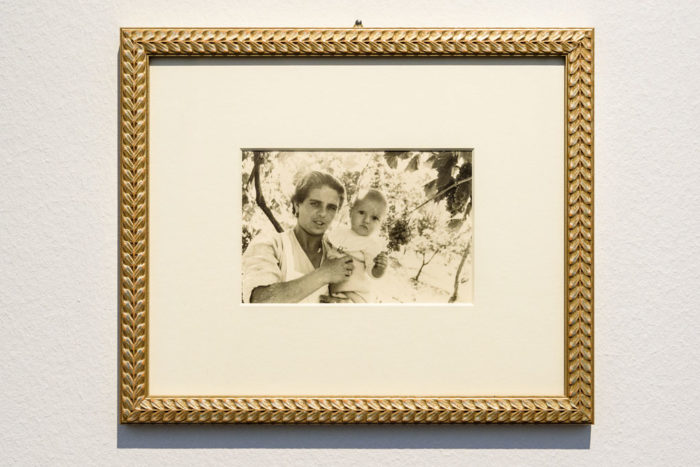
Cesare Pietroiusti, Un certo numero di cose / A Certain Number of Things. Installation view at MAMbo – Museo d’Arte Moderna di Bologna. Photo: Giorgio Bianchi, Comune di Bologna
1955 – GOOD BREAST
As it should be, it begins with an oral stage trauma. After the death of my father, and after nearly all traces of memory have disappeared from my mother’s mind, i am now the only keeper of my family’s legends. The one concerning the earliest weeks of my life might look like a Melanie Klein case-study. I was born on March 21, 1955, the only son of Franca, a woman of many virtues but perhaps with little familiarity with her own body and that of others. This is not surprising given that her mother, Grandmother Dina, a poet, literary critic and extraordinary teacher, was all brains and, i would say today (at the time this was unthinkable), as much male as she was female.
The consequence was that the transfer of knowledge that normally takes place between a young woman who is giving birth for the first time and her mother, about how to breastfeed a baby, failed to happen, and a few days after delivery my mother started to develop cracks on her nipples. A bothersome, yet very common occurrence, as is well-known, and relatively easy to treat, provided that you are not scared of pain and of your child, that you feel confident in your body, and are willing to follow a few simple pieces of advice. Instead, i imagine that my suffering mother embraced the logic of self-sacrifice, in which every problem turns into an inevitable drama, and this justifies an irrational, passive attitude, where you merely wait for the worst to happen.
She continued to breastfeed, but without taking care of her breast: the cracks led to mastitis, and a small local lesion turned into a general infection accompanied by high fever and—and here the story offers an extreme case of Klein’s sadistic-oral stage—her breast began to leak a mixture of milk, blood and pus, which in all evidence could not satisfy the hunger of the baby, who therefore sucked violently and even bit the nipple, causing a vicious circle that could not but lead to catastrophe. It was at that point that Grandmother Dina—who had failed to teach her daughter how to pinch the nipple between two fingers and shove it confidently right into the mouth of the ravenous infant—remembered that, when it had been her turn, she had reached out to a wet nurse. Which was commonplace at the time among young women of fine social standing. The wet nurse was a very peculiar social figure, a kind of highly specialised “maid”: she was a woman who had just given birth and, in order to earn a little money, entrusted her child to the care of a girlfriend or companion who was in the same situation (and would breastfeed two children), and gave her milk to the children of the ladies “from the city” who, for aesthetic, social, psychological or health reasons, were rather unwilling to perform this primary activity.
The wet nurse would have to be buxom and in good health, and since it was necessary for her to keep some distance from her family during her service, she had to come from the countryside. Since time immemorial, in Rome it was believed that the best wet nurses were found in the Ciociaria region. Grandmother Dina therefore got in her “Giardinetta” (besides being one of the first women teachers in senior high school, she was also one of the few who had a driving license) and drove to Ceccano. There she found Rosa, quickly hired her and took her to the city. I was entrusted to her care, and to her healthy, generous breast, and everybody (even my father and the other grandmother, who did not agree with this abdication of the motherly role—but then they were from Abruzzo…), swore that i immediately turned into a happy and, finally, well-nourished child. All accounts echoed the same words: “You flourished again.”
Rosa was an intelligent, reserved and determined woman. She knew how to take care of me and what to do with me. It was she who decided when i could lie in the arms of my mother, when i had to sleep, and of course when and how long i should feed. My time with the “good breast” lasted six months. At weaning, as prescribed by the rules of the urban bourgeoisie, my relationship with the wet nurse ended overnight, and there could be no turning back. I never saw Rosa again, and i could never find out what her family name was. But i have several photographs, probably taken by my father, of me in her lap. The one i have chosen was taken in a luxuriant vineyard, perhaps in Nemi, where my father was working in a sanatorium. There is a beautiful sunshine and i, staring into the camera, am holding the tip of a ripe bunch of grapes: i suppose it was September, because in October Rosa went back to Ceccano, to her son. Or was it a daughter? I do not know that, either.
One detail. As in all other photos i have of her, Rosa is wearing an apron. It was one of the rules of her job. The wet nurse provided a service that involved intimacy and closeness with the baby, but she was not to be confused with the mother. The apron, her work uniform, was necessary to clarify her social role.
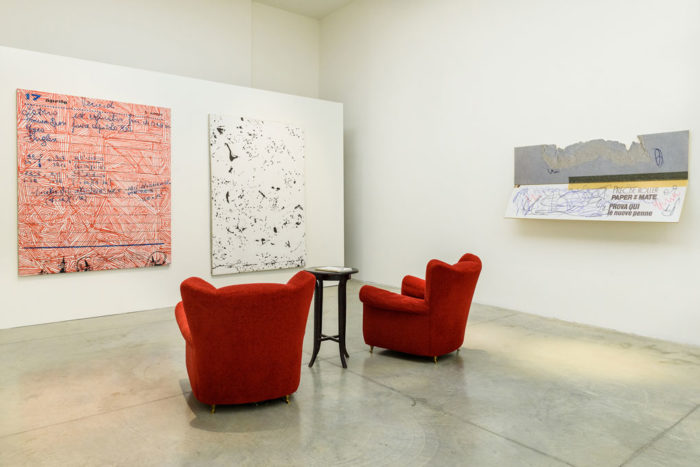
Cesare Pietroiusti, Un certo numero di cose / A Certain Number of Things. Installation view at MAMbo – Museo d’Arte Moderna di Bologna. Photo: Giorgio Bianchi, Comune di Bologna
1967 – PLAYING SOLITAIRE
One thing i did very often, and for long years, is playing alone. In the summer i would look for a desert spot on the beach, trace paths in the sand and play with plastic marbles with pictures and names of racing cyclists inside them: among these were the unforgettable Anquetil, Van Looy, Bahamontes, Balmamion and the Italian Taccone, who in real races always came second but was very much loved by my grandmother Loreta because, like her, he came from Avezzano. Every day i would create a different race track, with new shapes for curved and straight stretches. Each track corresponded to one stage in my own personal Giro d’Italia. I would shoot the marbles by «flicking» them with my thumb and middle finger, and accurately recorded, on a separate notebook, who came first, how many shots ahead of the second, and so forth. Stage by stage, a general race order took shape, and within a few days the tour was over (i often did one stage in the morning and one in the afternoon), the general ranking was final, and an absolute winner was proclaimed.
In order to do all of this, i looked for isolated places, because i would have been ashamed if somebody had seen me playing alone, and especially because a boy who noted results on large notebooks while playing could look very weird… Playing solo games like these, where the player has to “embody” several competitors, puts you in a paradoxical situation, which is very interesting in terms of developing one’s own ethical profile. Although you know very well that there inevitably will be favorites and biases, you need to create rules for yourself and accept the fact that you are going to break them, but only up to a point. In other words, you have to feel honest enough that your competition can be considered valid, which entails that the results should not be entirely predictable, and most importantly you should regard chance—for there is always something that turns out a bit differently than expected—as an element that can compensate for your control, will, and biased attitude.
In winter, in the city, it was impossible to trace tracks in the sand, so i had to find alternative games. In those years a new toy had been launched on the market, a small dark-blue ball, smooth outside and grainy inside. I think it was called something like Super-ball, or at least that is how we children called it. It had a remarkable rebound capacity and, if you threw a «slider», it could follow very unusual trajectories.
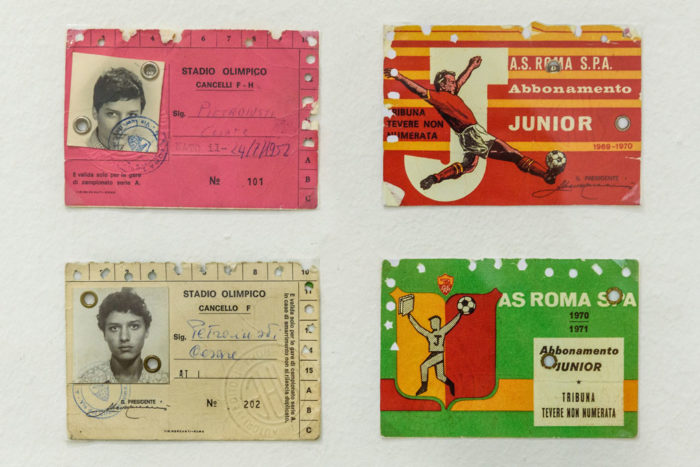
Cesare Pietroiusti, Un certo numero di cose / A Certain Number of Things. Installation view at MAMbo – Museo d’Arte Moderna di Bologna. Photo: Giorgio Bianchi, Comune di Bologna
At home in my living room, i used to crouch a few meters from the window splay, and threw the ball against the wall. The shot had to be done according to the following rule: first rebound on the floor, second rebound on the wall, and then the ball should have returned to me. If i had not been able to catch it on the fly, then the rival team would have scored a point. Obviously, i threw the ball for both teams. I think that each game consisted of three series of ten shots each. The results of each game were painstakingly recorded in writing. I remember i played this game very often, for hours on end: i not only liked the «athletic» side of throwing and catching, but also the fact that, since i was at home, i was free to write temporary and final results, rankings, relegations, shields, etc. on my notebook, with no need to be ashamed.
The Il Milione notebook, with a brown cover and an elegant pied-de-poule fabric-like texture, contains on one side a few seventh-grade geometry exercises, with dates spanning December 7, 1966 to February 16, 1967, and on the other side an unlikely spy story in which a secret organization simultaneously kidnaps both the Russian and the American president.
The story was left unfinished, and the immediately following part of the notebook contains a sequence, over twenty pages long, in which strange team names (Cortina, Cus Milano, Juventus-Bologna, Inter-Modena, Albaroma, Cus Bergamo, and more), alternate with the results of «days» of competitions and their corresponding rankings, with wins/loss/tie records for each game, points scored and lost, and other less comprehensible figures. It contains the complete data for four championships: the first saw the final victory, on a par, of Inter and Juventus, the second of Tevere, the third of Bari and the fourth of Inter, followed by a double play-off with Cortina and Cus Cortina.
At some point in this championship something happened that got accurately transcribed: Following steps taken by the disciplinary board, Cus Cortina is punished with nil-2 in favour of Juventus and it is decided that the Bari-Bologna match should be played again. The new match ends up 3-1 in favor of Bologna and: The complaint filed by Bari is rejected and the match is considered valid. A fifth championship—with all schedules for the following matches already prepared and written down—was interrupted after eight days, with the Corsari ahead of Inter and Bari. I cannot remember, and find it difficult to figure out, what might have motivated the complaints, disqualifications and punishments, or what might have been the decision-making criteria applied by the improvised, monocratic “disciplinary commissioner” who, on top of that, coincided with both teams involved in the dispute. What can instead be intuited, given the healthy drop in interest that marks each endgame (be it a childlike or other game), is the reason for the interruption of the last championship, with twenty-eight matches already set out on paper and never disputed.
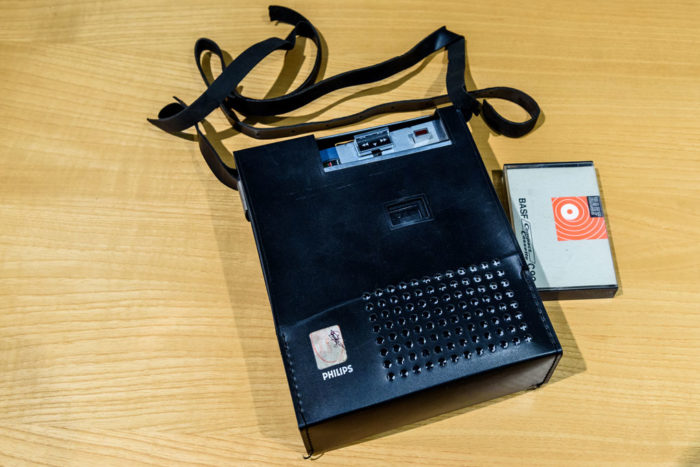
Cesare Pietroiusti, Un certo numero di cose / A Certain Number of Things. Installation view at MAMbo – Museo d’Arte Moderna di Bologna. Photo: Giorgio Bianchi, Comune di Bologna
1976 – EVERYONE CREATING THEIR OWN RADIO
1976 was the year in which radio stations began broadcasting to frequency modulation (FM). None of these stations had been authorized, so technically the Postal Police (then called Escopost) should have closed them all down. But the fact that it was so easy to obtain the technology required to broadcast—at least at district or small town level—caused a cascade effect, which led to such a high number of new “free radios” that Escopost eventually gave it all up, or better, only closed some of them down; among them was Bologna’s legendary Radio Alice which, in March 1977, amidst the famous street demonstrations, broadcast live its own forced shutdown.
The end of the RAI monopoly seemed to bring with it a historical change in society and in the mass media. It looked like an opportunity that everybody could take, even a small group of 20-year-olds, presumptuous enough to think that they could set up a culturally-oriented radio channel, and to believe they could find a public of listeners, who were also interested in things other than disco music or entertainment programs. Helped by the father of one of us, a lawyer who was curious about this experiment, even from the point of view of law theory, we turned a basement studio apartment in via Benaco into our editorial office, we hoisted an antenna on the roof of the building with the help of a practical, foldable geared handle mechanism, connected it to a transmitter we had been given by Radio Marsica (which turning into a TV channel and therefore no longer needed it) and, on March 1, 1976 at 3 p.m., we aired the debut broadcast of Radio Gamma (then renamed Radio Gamma Roma, when a Milan company forced us to change our name because they, unlike us, had registered theirs). My experience with the radio lasted a year and a half. A program i did on Sundays at 10 in the morning, that is, at mass time, was entitled Maledetta domenica (Damned Sunday), and consisted in reading texts against the Church and religion in general, to a soundtrack of the least pleasant minimalist or twelve-tone music i could find.
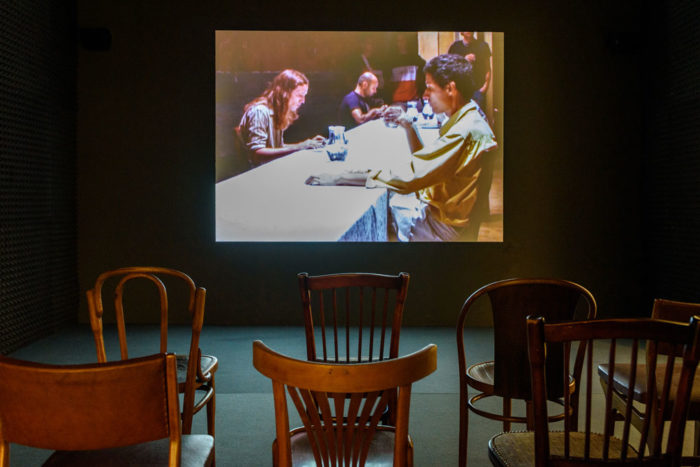
Cesare Pietroiusti, Un certo numero di cose / A Certain Number of Things. Installation view at MAMbo – Museo d’Arte Moderna di Bologna. Photo: Giorgio Bianchi, Comune di Bologna
At the editorial office, my role was that of director of the “science” department and, although somebody else was responsible for the “art” section, i and other two companions made a short trip to Venice in June 1976 to visit—and review—the Biennale, curated by Enrico Crispolti. That was my first real encounter with contemporary art and, as can be expected, it was disorienting. What i recall in particular is the English pavilion, where Richard Long (who of course i had never heard of before) was exhibiting A Line of 682 Stones, an endless row of stones, placed one after the other, room after room. I distinctly remember how my two friends commented it: “This is a hoax!”, and my answer: “Hey guys, apparently there’s something here we don’t know” (and was i right!). So i bought the catalogue and, after coming back to Rome, i searched in it for all the names of artists and critics which also appeared on the city phone book. I found several of them, including: Gianfranco Baruchello, Filiberto Menna, Claudio Cintoli, Franco Falasca, Maurizio Benveduti, Tullio Catalano, and Fabio Mauri. They all gladly accepted to be interviewed, some of them even came to our radio to make a few live broadcasts.
Unfortunately, no recordings survive of all this, but what i can say is that those meetings invariably evoked, both in me and in my friends, a mixture of bewilderment and curiosity. To us, most of these people looked like weird, nerdy idlers. However, the fact that they paid heed to us also made them likable in our eyes. Another task i had given myself within the radio program schedule, was to do a “mapping” (although i am certain that the term was not in use at the time) of the avant-garde theaters and associations in the city. I remember meeting Simone Carella, who lived in a tiny mezzanine on the stairs that led down to the Beat 72 club in via Gioacchino Belli, in the Prati district; and i also met the president of the Lega per la Protezione degli Uccelli (League for the Protection of Birds) in the Scimmia tower in via dei Portoghesi; and the association for the abolition of film censorship, whose members gathered in the historical building of the Radical Party in via di Torre Argentina.
Here, at the end of a meeting during which i had engaged in a lively debate with Luciana Pannella, sister of Marco, the Radical Party leader, i was approached by a man, completely dressed in black, who had kept silent all the time, in a corner of the room. He said to me: “I am interested in what you said, do come and see me”, and he handed me a piece of paper, with a fragment of the “rose-in-fist” logo (the symbol of the Italian Liberal Socialist Radical party) and a telephone number on it (i can still remember it: 6874839). He was a well-known artist, Sergio Lombardo: i have no idea what he was doing in a meeting on film censorship, nor do i know exactly why i phoned him shortly after. Perhaps i was thinking about doing some interview or broadcast for the radio. Or perhaps i felt that this encounter would radically change my life. It took me years to understand, process and accept that change.
Many years later, in 2014, i was giving a lecture and Sergio was present. He was asked to say something about that episode, which went back nearly forty years, and with his usual, somewhat diabolical wit, he said he had seen in me a young man who had all the exact opposite qualities to a “normal” artist, and therefore he had intuited, or even decided that i was just the right subject to turn into a “special” artist. Everything that followed, from that moment onwards, could therefore be regarded as the product of his experiment. A work of art that is not mine.
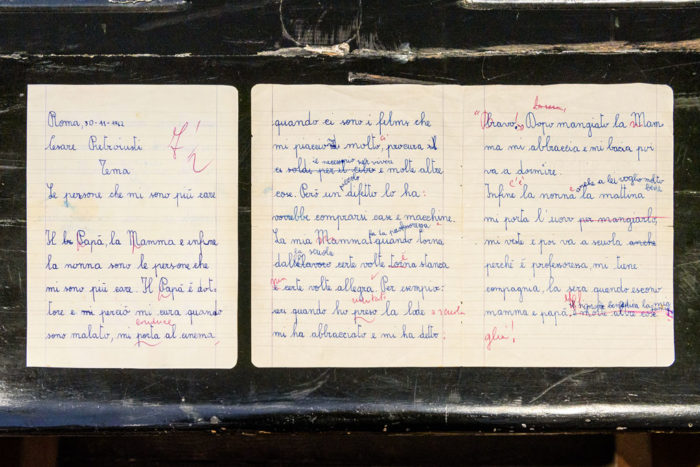
Cesare Pietroiusti, Un certo numero di cose / A Certain Number of Things. Installation view at MAMbo – Museo d’Arte Moderna di Bologna. Photo: Giorgio Bianchi, Comune di Bologna
1982 – PIERO MANZONI IN THE TRUNK OF MY 128
During 1981 all of us who were members of the Jartrakor group were invited to do a show in Milan at Galleria Cenobio Visualità, in via Pontaccio, right in the Brera district. The gallery owner, Andreina Maioli, was the widow of Cesare Nova who, besides being a friend and a consultant (thanks to his expertise as a surveyor), had been one of the first, if not the very first and for a long time the only, collector of Piero Manzoni’s works.
Apart from Lombardo, for all the others this was the first trip outside Rome, and outside the space of via dei Pianellari. The show was entitled “Otto artisti romani”: Vittorino Curci, Anna Homberg, Sergio Lombardo, Gianluca Manzi, Domenico Nardone, Cesare Pietroiusti, Ferruccio Raffaeli. I cannot remember how long we stayed in Milan, but i do recall a few afternoons spent at Cenobio, and my meeting with Vincenzo Agnetti, who used to visit the gallery. I remember the relationship of friendship and trust we established with Andreina and Aldo Spinelli, who worked with her, and exhibited at Jartrakor the following year. At her home, a few steps from the gallery, Andreina had a few works by Piero Manzoni, who was certainly not as famous then as he is now, but who nonetheless had often been the subject of debates, comparisons, and analyses during our evenings at Jartrakor. Without much of an effort, we convinced Andreina to lend us some of these works for a show in Rome.
On December 10, 1981, after a dinner in Florence, organised to celebrate the end of military service along with all my course mates, instead of driving back to Rome, with my pea-green FIAT 128 I went to Milan to Maioli’s house, to pick up the Manzoni works. Michele Rucci, a young Roman doctor, and one of the dinner guests, offered to come with me. I don’t know why he did this, if out of curiosity, generosity, sense of adventure or simply because he liked me. Undoubtedly, since we made the whole trip by might, his presence was very helpful. We picked up the works and immediately left again for Rome. I distinctly remember the moment when i was about to close the trunk, and i paused for a moment to look inside. There was one can of Merda d’artista (Artist shit) there was il Fiato d’artista n. 2 (Artist breath n. 2) the binder with the Tavole di accertamento (Ascertainment plates), the oblong box with Corpo d’aria (Body of air), the black cylinder of Linea di m. 10,99, an envelope with some unused Blocchetti di autenticazione (Authentication blocks), a small box containing an egg with a fingerprint on it, cracked to pieces. All this occupied a very small space in the trunk, and yet i had a strong feeling that the load i was carrying in my car was somehow making me part of a historical event. I said this to a skeptical Michele, who had never heard of Piero Manzoni but nodded without replying, maybe because he was tired.
A few days earlier, at Ciampino airport, i had met Carolyn, who had just graduated and gave English lessons to Air Force pilots. After a few initial skirmishes, which had made me realize, even at the cost of some embarrassing moments, that she knew more about art than i did, i invited her at Jartrakor, to see the Manzoni show. I have always believed that one of the reasons why she took an interest in me was precisely her positive surprise at that exhibition. Between 1985 and 1996 i had three daughters with her. We lost one of them, Sofia, in an accident in July 1995. I owe her much of the development of my artistic thought, more specifically its exactitude and radicality—providing, of course, that such qualities are really there. I say this only now and will not repeat it in the following pages of this text. After all, we have always kept our mutual professional influence secret; for me, this has been a precious source of understanding and togetherness.
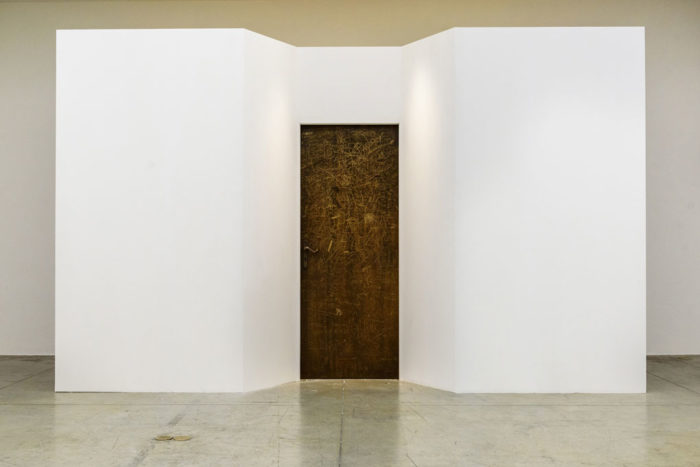
Cesare Pietroiusti, Un certo numero di cose / A Certain Number of Things. Installation view at MAMbo – Museo d’Arte Moderna di Bologna. Photo: Giorgio Bianchi, Comune di Bologna
1997 – USELESS THOUGHTS
To get good ideas that can be used for interesting art projects you need to do almost nothing. You certainly do not need to try hard to learn sophisticated, difficult techniques (this is a great relief to me…), you do not have to try to deliberately apply convincing philosophical-critical theories, or to delve into the most advanced technology, nor to use mood-altering drugs. Rather, i have the impression that at any moment during the day, «parallel» thoughts to the normal (or supposedly normal) mental stream emerge, and that the only thing i can do is to try and prevent them from slipping away.
Starting from the mid-1990s, i have called these thoughts “nonfunctional thoughts”: things that come to your mind for no apparent reason. Everyone generates this kind of thoughts, but they are usually discarded. Parasitic or impossible ideas; associations between fragments of observed reality and inner states; intersections between linguistic elements (word plays, double entendres, phrases), and feelings connected with specific contexts; variations on very common behavior or enactment of socially standardized behavior, but devoid of the function it should perform; inside-outside, above-beneath or forward-backward inversions; satisfaction of trivial curiosities; enactment of anti-economic behaviors; serialization of specific data or observations; classification of ordinary types of behavior. All this can become source material for my artistic work. The production of such thoughts is not intentional, since they appear during states of consciousness in which attention is not focused, that is, moments when you are «inattentive» and therefore, returning to a state of the psyche that is conducive to their memorization is by no means obvious. To me, writing them down as soon as i can has always seemed crucial. Around the mid-1980s i began, at first occasionally and then more and more often, to note them down in notebooks. At the beginning of 1997 i decided i would write them all down for a whole year, even the most absurd or silly ones, on newspapers (two of them, a right-wing and a left-wing one) which i would regularly buy.
This project actually only lasted three months and a half: the newspapers with those strange, uncertain sentences handwritten next to the news headlines, ended up being shown anyway, in an exhibition at Studio Morra in Naples. As a companion to the exhibition, a booklet was published (whose very first edition consisted of xerox copies), containing around eighty «thoughts» dating between 1978 and 1996, preceded by a short introduction written by me. A non-functional thought can be relative to one’s own situation. It can be a way of observing fragments of reality, of creating connections among events, people, places, perceptions, beliefs, etc. Any idea that is not directly determined by carrying out an activity, and therefore appears to have no reason and be unusable, can be considered non-functional. Any impractical idea which, although superfluous, is experienced in a non-compulsory, non-neurotic way. Any idea whose emergence cannot be predicted.
The sphere of non-functional thoughts is not the exclusive prerogative of specific categories of people (for instance, artists or psychopaths), but is present in everyone. In most cases, however, such thoughts are repressed or ignored because they are perceived as parasitical, as deranging the mechanisms of concentration during such tasks as working or studying. A non-functional thought can appear in any situation, although it tends to emerge more frequently when our attention is not engaged, such as during a long wait, or when driving alone, that is, when the external and internal perceptive data are not strictly organized towards some sort of goal. The persistence of thoughts of such a kind in individual memory is very rare. If they are not fixed by writing them down or by other means, they tend to disappear in a short time, not unlike what happens with dreams.
One of the central ideas behind my work is that it is possible to make an artwork; a) by concentrating our attention—rather than deflecting it—on non-functional thoughts, in order to bring them into sharper focus and articulate them better. b) By building a communicative context in which they can be recognized by others as part of a common heritage and, at best, as the possible existence of a psychic dimension that is usually ignored, or even as elements in a process of cognitive restructuring.
The non-functional thoughts i use in my work can remain at “project” or “instruction” stage, as in the case of this publication. Or they can, in specific circumstances, take the form of a work and therefore, through technical devices that are chosen on a case-by-case basis, become communication and socialization factors. The booklet was immediately reprinted and subsequently translated into English. I have often referred to it as my “general catalogue.” Its extremely small size makes it look like a joke, but to me it is nothing of the sort.
At times it has even been used as an “instruction manual” and this is perhaps more interesting. Occasionally, other artists or curators have chosen passages from the nonfunctional thoughts and carried them out, exhibiting them in a few shows as collaborative projects between them and me. Indeed, i have often thought that my “ideal” works are those i did “by proxy,” that is to say, the ones that were carried out by others. In a way, every expression of a nonfunctional thought is also a proposal for a shared work. Anyone can take one of these thoughts, put it into practice, and thus turn it into a four-handed work that is both theirs and mine.
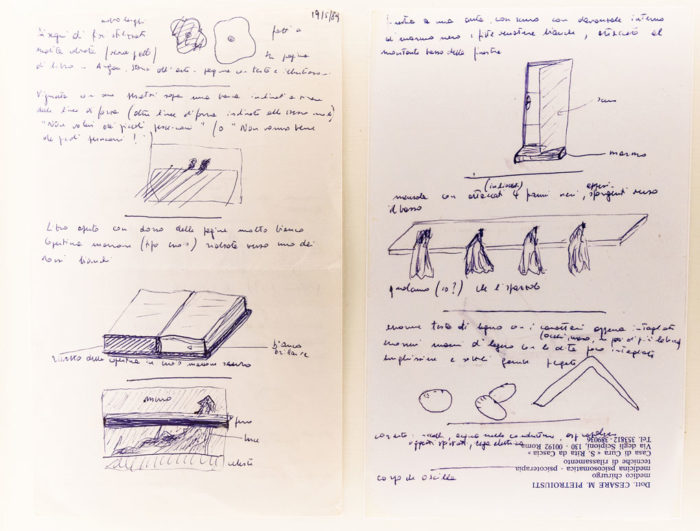
Cesare Pietroiusti, Un certo numero di cose / A Certain Number of Things. Installation view at MAMbo – Museo d’Arte Moderna di Bologna. Photo: Giorgio Bianchi, Comune di Bologna
2017 – LIVING WORKS
“Sensibile comune. Le opere vive” (Common sensible. The living works) was a show-event lasting 9 days, which took place at Rome’s Galleria Nazionale d’Arte Moderna between January 14 and January 22, 2017. It was one of the side events to C17. Conferenza di Roma sul comunismo (C17. Rome conference on Communism), which brought to Rome philosophers and thinkers from all over the world. Starting from a reflection on the spheres of the “common” and the “sensible”, Ilaria Bussoni, Nicolas Martino and i (our curatorial group was later joined by Laura Perrone), involved Cristiana Collu, Director of GNAM, in an experiment that was also aimed at questioning the traditional relationship between public and museum. The Gallery hosted a show in which some of the works of the collection were made to interact with works by contemporary artists, mostly created especially for the occasion (i took the liberty of creating a relationship between 400 drawings made with fire, which i freely distributed, with a Combustione by Alberto Burri); but most importantly, the museum space hosted an uninterrupted sequence of debates, performances, toasts, group sleep sessions, encounters with plants, film projections with live improvised music, choreographies, open archives, group or solitary actions, and much more.
As one of the organizers, my task was to convince Collu, and the restoration staff of the museum, to exhibit some of the works in the collection which, having been badly damaged, were currently located in storage areas or in restoration labs, displaying them “as they were.” Tela di Penelope ovvero Stuoia (Penelope’s shroud, or Mat) had been made by Pino Pascali in 1968, a few months before his death in an accident. The work consisted in a large rectangle, a sort of carpet, with dimensions of cm 230 x 120, made of hand-woven steel wool strips. The artist himself had probably rolled the work around a long wooden pole. And so it had remained until 1996, when Pascali’s family donated it to the National Gallery along with various other works by Pascali. Already then, however, the natural oxidation process had slowly but relentlessly invaded the large metal mat, causing the material to agglomerate and thus making it impossible to roll it out—any manipulation or attempt at unrolling the Stuoia, and restore it to the status for which it had been conceived, would have caused it to crumble.
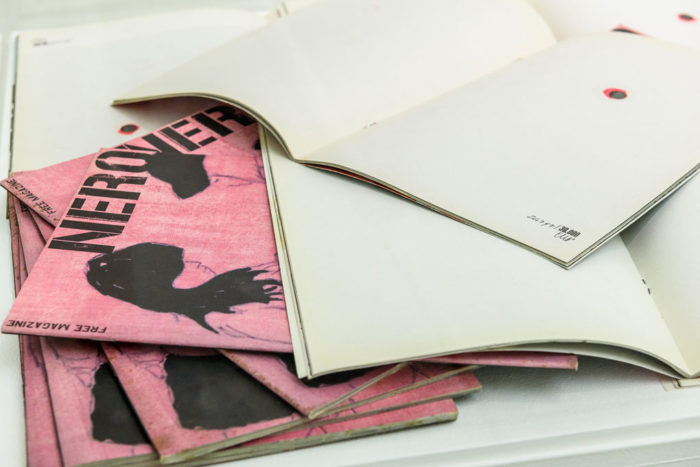
Cesare Pietroiusti, Un certo numero di cose / A Certain Number of Things. Installation view at MAMbo – Museo d’Arte Moderna di Bologna. Photo: Giorgio Bianchi, Comune di Bologna
It was exciting, and a privilege, to be able to witness and physically participate in the making of the display for this work, and in its, albeit partial, reopening: i have seen and touched the metal straws, caked on one another to the point that it was impossible to tell one layer of the roll from the next; i have seen the irreversible transformation of a sculpture designed to be spread out on the floor into a compact block; i have seen its progressive stages, the iron oxide, the brown dust, to which the whole thing will presumably turn one day.
By calling attention to the process of oxidation, caking and flaking, which the steel wool strips have undergone and are still undergoing, Tela di Penelope reveals a work that has become something else, by virtue of the very pre-logical transformation processes that take place independently of the human will, on which the poetics of the Arte Povera movement used to focus, to the point of almost ideologizing them. The public exhibition of a work like this shows that, at the very moment when the fetishized integrity of the art object fades, an unexpected surplus of meaning is created, which can act as a bridge between different epochs, and free the work both from its belonging to a specific point in time and from its static condition of masterpiece. Freed from the auratic immutability that generally characterizes the museum exhibition, the damaged work requires observers to perform an actual parceling of the sensible, inviting them to approach the work, get the feel of it, touch it. Freed from its date-of-creation, the artwork becomes contemporary again, even as it remains a historical work. Transfigured by the evidence of its transformative processes, and despite its precariousness, or better because of it, it becomes a “living work.”




